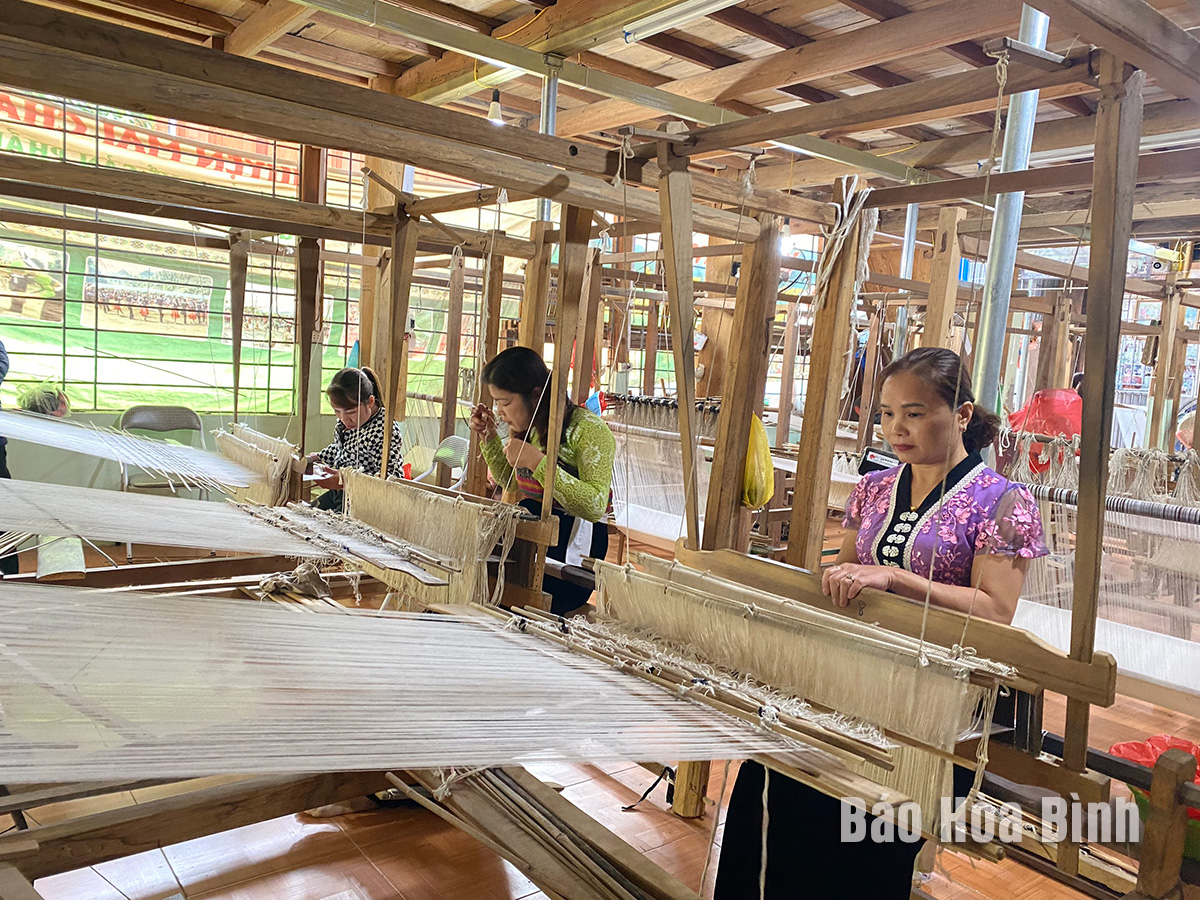
In Hoa Binh province, 11 traditional craft villages with more than 400 small-scaled production households have put in place a clean and green production model, establishing new standards for sustainable development. Waste collection sites and wastewater treatment facilities have been meticulously managed by local residents.

Chieng Chau commune in Mai Chau district has paid due attention to building
green craft villages towards sustainable development.
Before
the concept of "green craft villages" emerged, many craft zones in
the province suffered from pollution caused by smoke, dust, chemical odours,
and waste from workshop operations. The conflict between economic development
and environmental protection had been a difficult puzzle to solve for years in
traditional craft villages.
In
recent years, many rural areas have stopped waste burning. Stone processing
workshops now spray materials with water before cutting to prevent dust, and
debris is collected rather than dumped into streams. Meanwhile, brick kilns that
once released thick smoke have been upgraded, with many facilities switching
entirely to non-fired brick production
Raising
public awareness is the key to environmental protection. In 2020-2022, the
province organised more than 180 workshops and training sessions on
environmental protection, along with more than 100 drives for collection of
pesticide packaging, attracting over 4,000 participants.
Furthermore,
environmental protection messaging has been integrated into the spiritual and
cultural life of communities through four theatrical exchanges, drawing
competitions, contests, and many more.
Rather
than top-down directives, local citizens have been empowered through grassroots
initiatives like "residential areas of self-managed environmental protection".
Village-based teams now enforce regular cleaning schedules, while small
workshops have invested in wastewater treatment systems, dust barriers, and
proper safety equipment.
Many
of Hoa Binh's craft villages now serve as models for sustainable production. In
Tan My commune, once severely polluted, residents have implemented biogas
systems, waste separation, and strategic greenery. These efforts have
revitalised formerly contaminated rice fields and restored clean air.
As Vietnam enters a new phase of economic and administrative reform in 2025, Hoa Binh province is stepping up its efforts to streamline governance, boost economic growth, and attract investment.
The Hoa Binh provincial People's Committee held its monthly meeting on March 26 to review the progress of key projects, assess budget revenue and public investment disbursement, provide feedback on draft documents for submission to the provincial Party Committee's Standing Board, and discuss other important matters related to the committee's governance activities.
Playing a key role in Hoa Binh province’s economic development, Luong Son district has been focusing on science and technology development, innovation, and digital transformation.
Identifying the application of online public services as a key step in administrative procedure reform and e-government building, Kim Boi district has proactively provided services and supported residents and businesses in accessing and utilising full-process online public services promptly and efficiently. The locality aims to lift the rate of end-to-end online public services to over 90%, with all officials and civil servants handling tasks in the digital environment.
Nguyen Anh Tuyet, hailing from a family steeped in the ancient art of herbal medicine, is transforming local medicinal herbs into high-value concentrated extracts, elevating their worth and healing potential.
Nguyen Phi Long, an alternate member of the Party Central Committee, Secretary of the Hoa Binh provincial Party Committee, and head of the steering committee for the province's key projects, chaired a conference on March 25 to discuss measures for implementing the project on constructing the Hoa Lac - Hoa Binh road and upgrading the Xuan Mai - Hoa Binh section of National Highway 6 under the public-private partnership (PPP) model.



